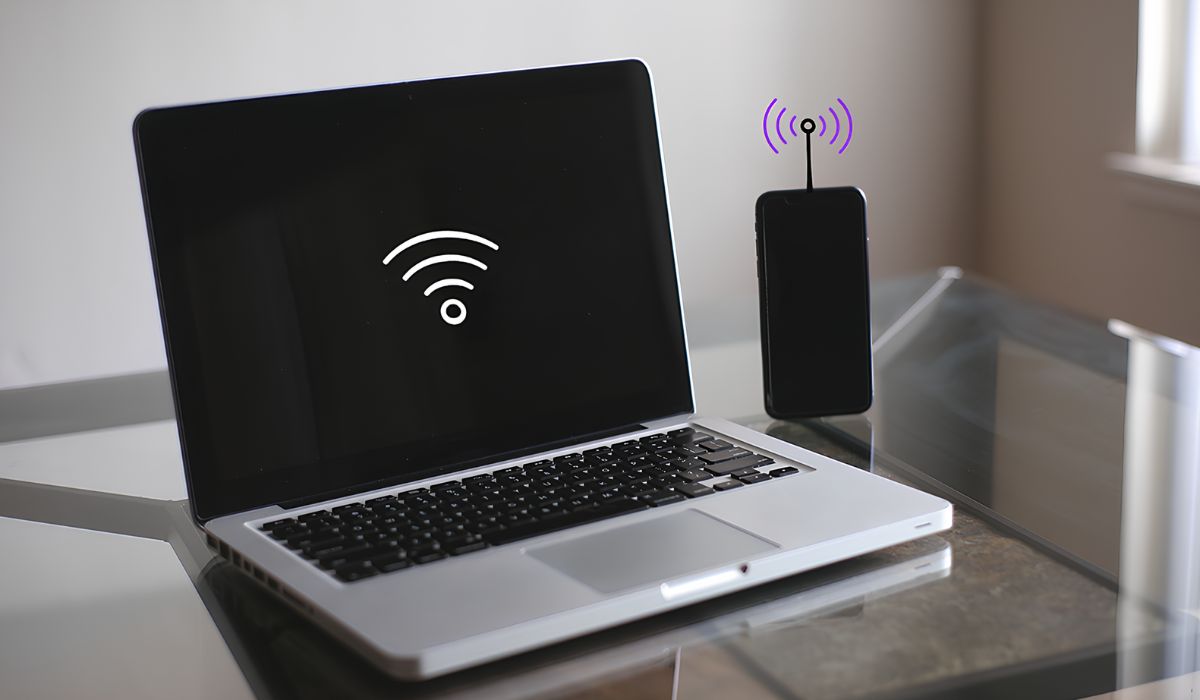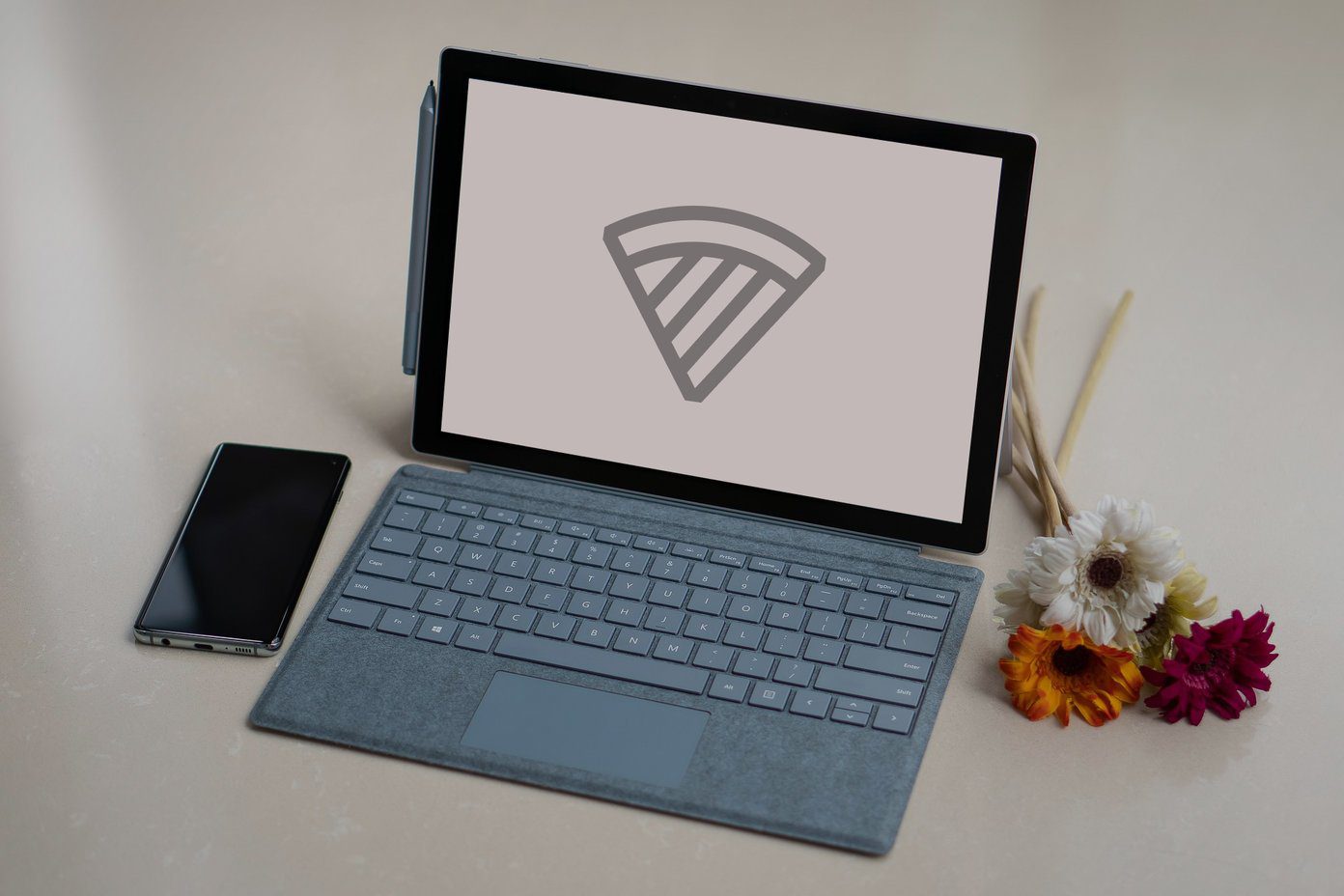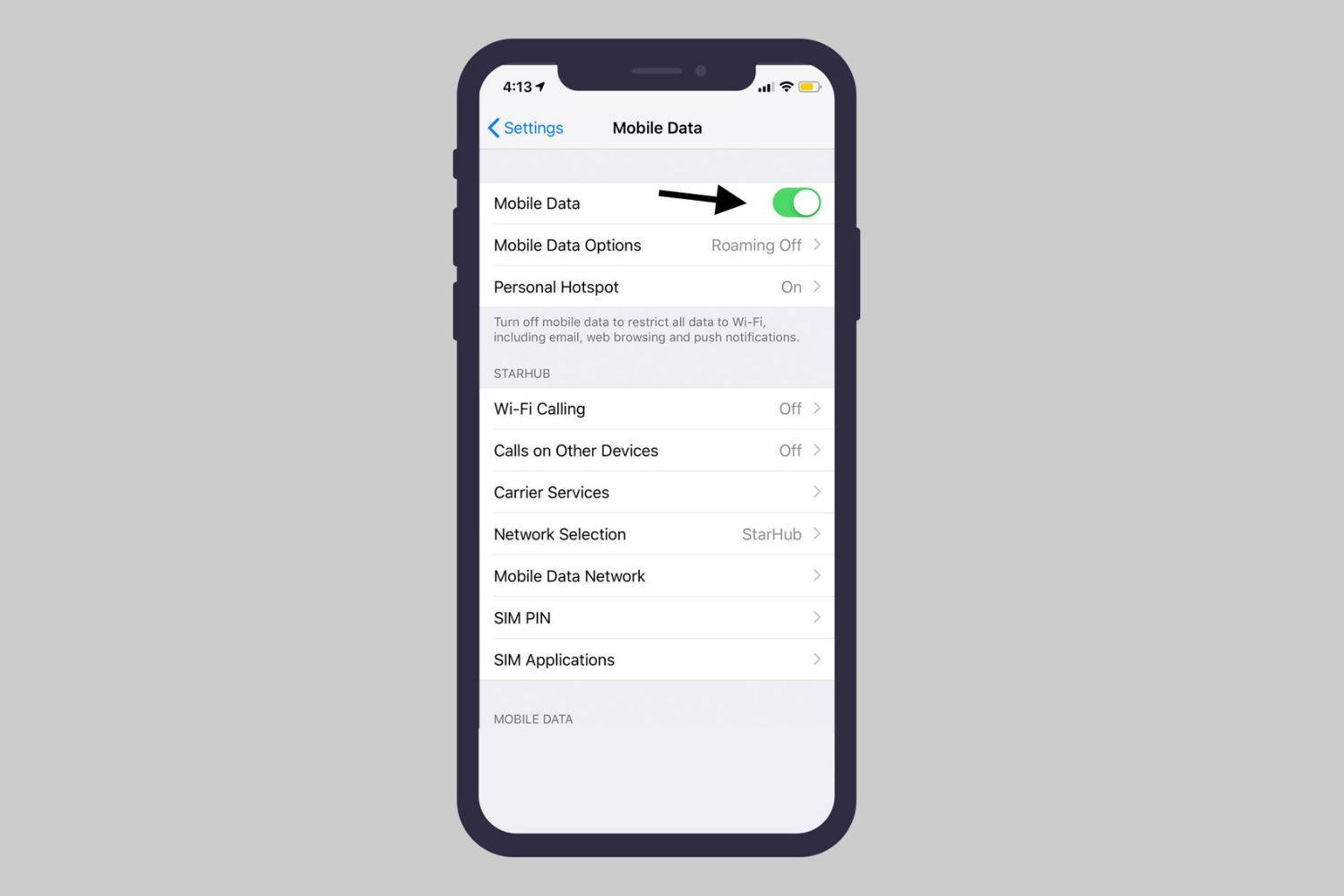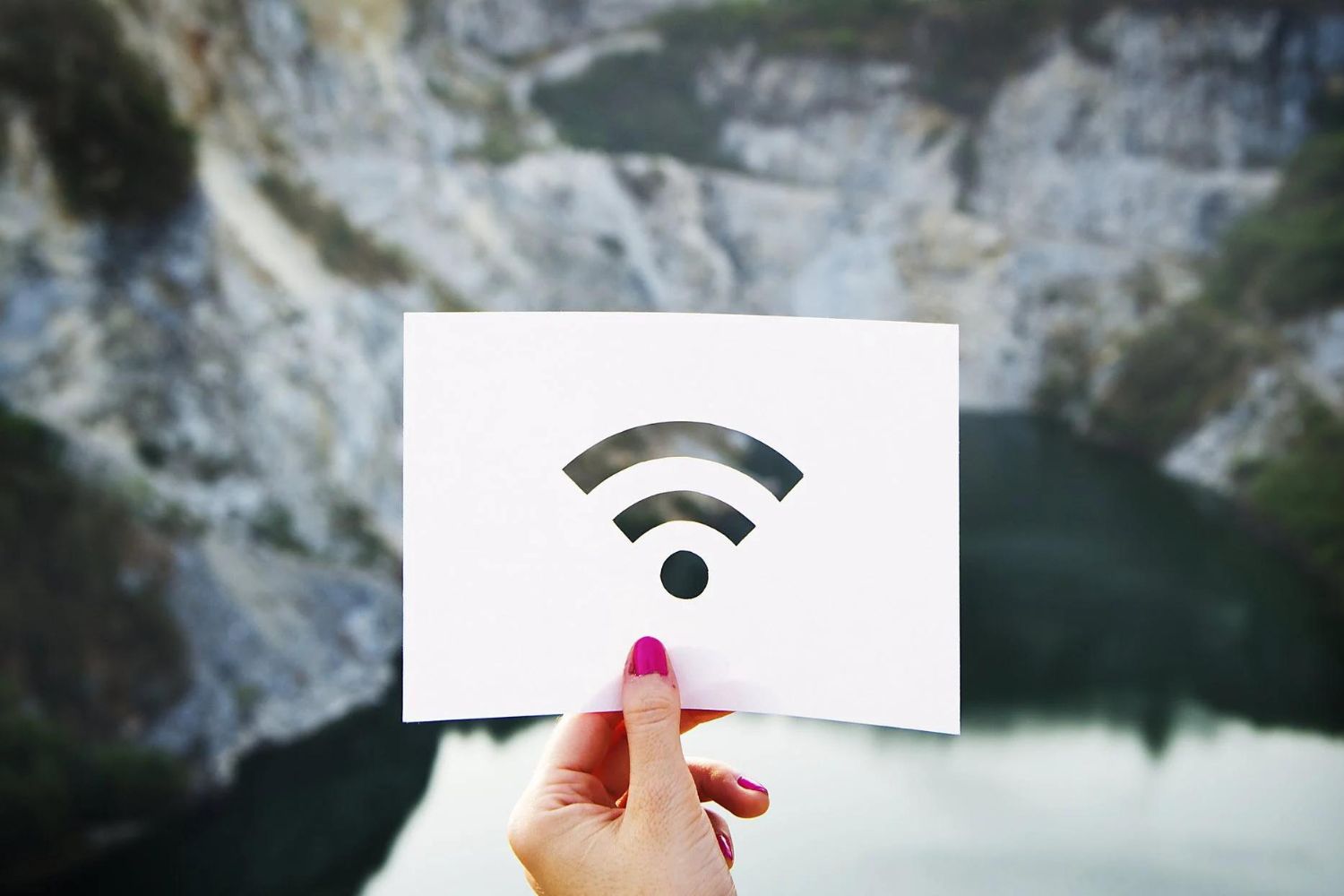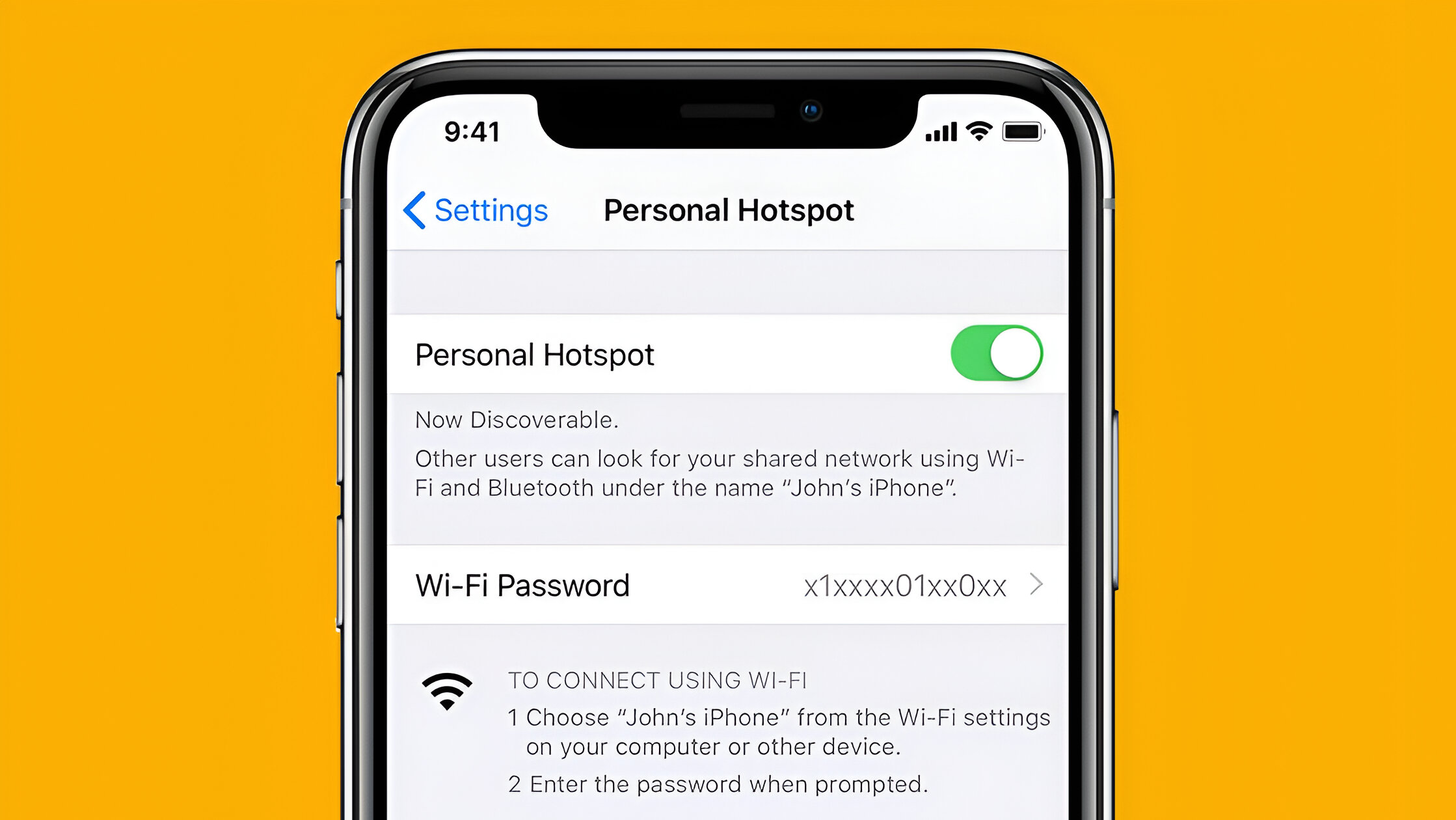Introduction
Creating a Wi-Fi hotspot from your laptop can be a game-changer, providing a convenient way to share your internet connection with other devices. Whether you're at a coffee shop, in a hotel room, or simply need to extend your home network, turning your laptop into a Wi-Fi hotspot offers flexibility and connectivity on the go. In this guide, we'll explore the simple steps to transform your laptop into a hotspot, allowing you to connect your smartphone, tablet, or other devices effortlessly.
By leveraging your laptop's Wi-Fi capabilities, you can establish a personal hotspot that enables seamless internet access for multiple devices. This can be particularly useful in situations where you have limited access to traditional Wi-Fi networks or need to create a secure connection for your devices. Additionally, creating a Wi-Fi hotspot from your laptop can be a cost-effective alternative to purchasing a separate mobile hotspot device, saving you money while expanding your connectivity options.
In the following sections, we will delve into the step-by-step process of setting up a Wi-Fi hotspot using your laptop. From checking Wi-Fi compatibility to customizing hotspot settings, you'll gain a comprehensive understanding of how to harness your laptop's capabilities to create a reliable and efficient Wi-Fi hotspot. Whether you're a frequent traveler, a remote worker, or simply seeking a flexible networking solution, learning how to create a Wi-Fi hotspot from your laptop can empower you with greater control over your internet connectivity. Let's embark on this journey to unlock the potential of your laptop as a versatile Wi-Fi hotspot.
Step 1: Check Wi-Fi Compatibility
Before embarking on the process of creating a Wi-Fi hotspot from your laptop, it's crucial to ensure that your device supports this functionality. Most modern laptops are equipped with the necessary hardware and software capabilities to serve as a Wi-Fi hotspot, but it's always prudent to verify this before proceeding.
To begin, ascertain that your laptop has a built-in wireless network adapter. This component is essential for transmitting the Wi-Fi signal to other devices. You can check for the presence of a wireless network adapter by accessing the device manager on your Windows laptop or the system profiler on a Mac. Look for the "Network Adapters" category, where you should find an entry related to Wi-Fi or wireless connectivity.
Next, confirm that your laptop's operating system supports the "hosted network" feature, which is instrumental in enabling the creation of a Wi-Fi hotspot. For Windows users, this functionality is available in versions 7 and above, while Mac users can utilize the "Internet Sharing" feature to achieve similar results.
It's important to note that while most laptops are equipped with the necessary hardware and software components for creating a Wi-Fi hotspot, certain older or budget-friendly models may lack this capability. In such cases, it may be necessary to use a third-party software solution to achieve hotspot functionality, albeit with potential limitations and compatibility issues.
Furthermore, consider the network connectivity options provided by your laptop. If your device is connected to the internet via an Ethernet cable, you can still create a Wi-Fi hotspot by sharing this wired connection wirelessly. This can be particularly useful in scenarios where traditional Wi-Fi networks are unavailable or unreliable.
By conducting a thorough check of your laptop's Wi-Fi compatibility, you can ensure that it possesses the essential components and features required to serve as a reliable Wi-Fi hotspot. This proactive step sets the stage for a seamless and successful hotspot setup, allowing you to proceed with confidence as you transform your laptop into a versatile hub for wireless connectivity.
Step 2: Set Up the Hotspot
Setting up a Wi-Fi hotspot on your laptop involves leveraging its built-in capabilities to broadcast a wireless signal that other devices can connect to. This process enables you to extend your internet connection to smartphones, tablets, and other Wi-Fi-enabled devices, creating a personalized network that offers convenience and flexibility.
To initiate the hotspot setup, begin by accessing the network settings on your laptop. For Windows users, this typically involves navigating to the "Network and Sharing Center" and selecting the option to set up a new connection or network. Within this menu, you should find the "Set up a wireless ad hoc (computer-to-computer) network" option, which enables you to establish a direct wireless connection between your laptop and other devices.
Upon selecting this option, you will be prompted to configure the hotspot settings, including the network name (SSID) and security key (password). The network name serves as the identifier for your hotspot, allowing other devices to locate and connect to it. Meanwhile, the security key ensures that only authorized users can access the hotspot, safeguarding your connection from unauthorized access.
For Mac users, the process involves accessing the "System Preferences" and navigating to the "Sharing" menu. Within the "Sharing" menu, you can select the "Internet Sharing" option, which allows you to share your internet connection with other devices via Wi-Fi. Here, you can specify the wireless network name, security type, and password, tailoring the hotspot settings to suit your preferences and security requirements.
Once the hotspot settings have been configured, you can activate the hotspot on your laptop, effectively transforming it into a broadcasting hub for wireless connectivity. Other devices within range can then detect and connect to your hotspot, enabling them to access the internet through your laptop's connection.
By following these straightforward steps, you can establish a Wi-Fi hotspot from your laptop, empowering you with the ability to extend your internet connection to a multitude of devices. This newfound capability opens up a world of possibilities, allowing you to stay connected on the go, share your internet access with friends or colleagues, and create a secure and reliable wireless network tailored to your specific needs.
Step 3: Connect Devices
Once you have successfully set up the Wi-Fi hotspot on your laptop, the next step involves connecting your devices to the newly created network. Whether you're looking to access the internet on your smartphone, tablet, or any other Wi-Fi-enabled device, the process of connecting to the hotspot is straightforward and can be accomplished in just a few simple steps.
To begin, ensure that the device you wish to connect is within the range of the Wi-Fi hotspot signal emitted by your laptop. This typically entails being in close proximity to your laptop, especially if you're in a confined space such as a room or a small office. Once you've confirmed that the device is within range, proceed to access its Wi-Fi settings.
On your smartphone, for example, navigate to the Wi-Fi settings menu and scan for available networks. You should be able to locate the network name (SSID) of your laptop's hotspot among the list of available Wi-Fi networks. The network name you specified during the hotspot setup process will serve as the identifier for your hotspot, making it easily recognizable to other devices.
Select the network name corresponding to your laptop's hotspot and enter the security key (password) when prompted. This key, which you established during the hotspot setup, acts as a security measure to prevent unauthorized access to your hotspot. By entering the correct security key, your device will authenticate and establish a connection to the hotspot, enabling you to access the internet through your laptop's network.
Once the connection is established, you should see a confirmation message indicating that your device is now connected to the Wi-Fi hotspot. At this point, you can open a web browser or any internet-enabled app on your device to verify that you have successfully gained access to the internet via your laptop's hotspot.
It's important to note that the number of devices that can connect to your laptop's hotspot may be limited by the capabilities of your laptop and the network load. While some laptops support a generous number of simultaneous connections, others may have more restrictive limitations. Be mindful of this when connecting multiple devices to your hotspot, especially in scenarios where network performance may be a concern.
By following these simple steps, you can seamlessly connect your devices to the Wi-Fi hotspot created by your laptop, extending your internet access to a diverse range of Wi-Fi-enabled devices. This newfound connectivity empowers you to stay online, remain productive, and enjoy the convenience of a personalized wireless network, all facilitated by your laptop's versatile hotspot capabilities.
Step 4: Customize Hotspot Settings
After successfully setting up your Wi-Fi hotspot, you have the flexibility to customize its settings to align with your specific preferences and requirements. Customizing the hotspot settings allows you to tailor the network to your liking, ensuring optimal performance, security, and ease of use for all connected devices.
One of the key aspects of customizing the hotspot settings is adjusting the network name (SSID) and security key (password). While these details were initially configured during the setup process, you may find it beneficial to modify them for enhanced personalization and security. Changing the network name to something easily identifiable and relevant to your usage scenario can simplify the process of locating and connecting to the hotspot, especially in environments where multiple Wi-Fi networks are present. Additionally, updating the security key at regular intervals or using a strong, unique password can bolster the security of your hotspot, mitigating the risk of unauthorized access and potential security breaches.
Furthermore, you can explore additional settings related to network visibility and accessibility. For instance, some laptops allow you to adjust the visibility of your hotspot, determining whether it is discoverable by all nearby devices or limited to specific connections. This feature can be particularly useful in scenarios where you want to restrict access to the hotspot, ensuring that only designated devices can connect to it. Additionally, you may have the option to specify the type of security protocol used by the hotspot, such as WPA2-PSK (Wi-Fi Protected Access 2 – Pre-Shared Key), offering an added layer of encryption to safeguard the network traffic and data transmitted through the hotspot.
Moreover, consider exploring advanced settings that enable you to manage the bandwidth allocation and prioritize certain types of network traffic. Some laptops provide the ability to allocate bandwidth among connected devices, ensuring a fair distribution of network resources and preventing one device from monopolizing the available bandwidth. This feature can be beneficial in environments where multiple devices are simultaneously connected to the hotspot, promoting a balanced and equitable distribution of network performance.
In addition to these customizable settings, you may have the option to monitor and manage the connected devices, allowing you to view a list of devices currently accessing the hotspot and potentially apply restrictions or permissions to individual devices. This level of control empowers you to oversee the usage of the hotspot and make informed decisions regarding network management and security.
By delving into the customization options available for your Wi-Fi hotspot, you can tailor the network to suit your specific needs, enhance its security measures, and optimize its performance for seamless connectivity. This personalized approach ensures that your laptop's hotspot serves as a reliable and adaptable wireless hub, catering to a diverse range of devices and usage scenarios.
Conclusion
In conclusion, the ability to create a Wi-Fi hotspot from your laptop opens up a world of opportunities for flexible and convenient internet connectivity. By following the simple steps outlined in this guide, you can harness the potential of your laptop to serve as a versatile hub for wireless networking, empowering you with the capability to extend your internet connection to a multitude of devices.
The process begins with a thorough check of your laptop's Wi-Fi compatibility, ensuring that it possesses the essential hardware and software components required to function as a Wi-Fi hotspot. By verifying the presence of a wireless network adapter and confirming support for the "hosted network" feature, you can lay the foundation for a successful hotspot setup.
Upon confirming Wi-Fi compatibility, you can proceed to set up the hotspot on your laptop, configuring the network name and security key to establish a personalized and secure wireless network. Whether you're using a Windows laptop or a Mac, the process involves accessing the network settings and activating the hotspot functionality, allowing other devices to connect and access the internet through your laptop's connection.
Once the hotspot is set up, the next step involves connecting your devices to the newly created network. Whether it's a smartphone, tablet, or any other Wi-Fi-enabled device, the process of connecting to the hotspot is straightforward and can be accomplished in just a few simple steps. By entering the correct security key and establishing the connection, you can seamlessly access the internet through your laptop's hotspot, enjoying the flexibility of wireless connectivity.
Furthermore, customizing the hotspot settings allows you to tailor the network to your specific preferences, enhancing its performance, security, and accessibility. By adjusting the network name, security key, and exploring advanced settings related to network visibility, bandwidth allocation, and device management, you can optimize the hotspot to suit your unique usage scenarios and security requirements.
In essence, learning how to create a Wi-Fi hotspot from your laptop equips you with a valuable skill that can enhance your connectivity options in various settings, including travel, remote work, and home networking. By leveraging your laptop's capabilities to establish a reliable and secure Wi-Fi hotspot, you can stay connected, share internet access with others, and enjoy the convenience of a personalized wireless network tailored to your specific needs.









